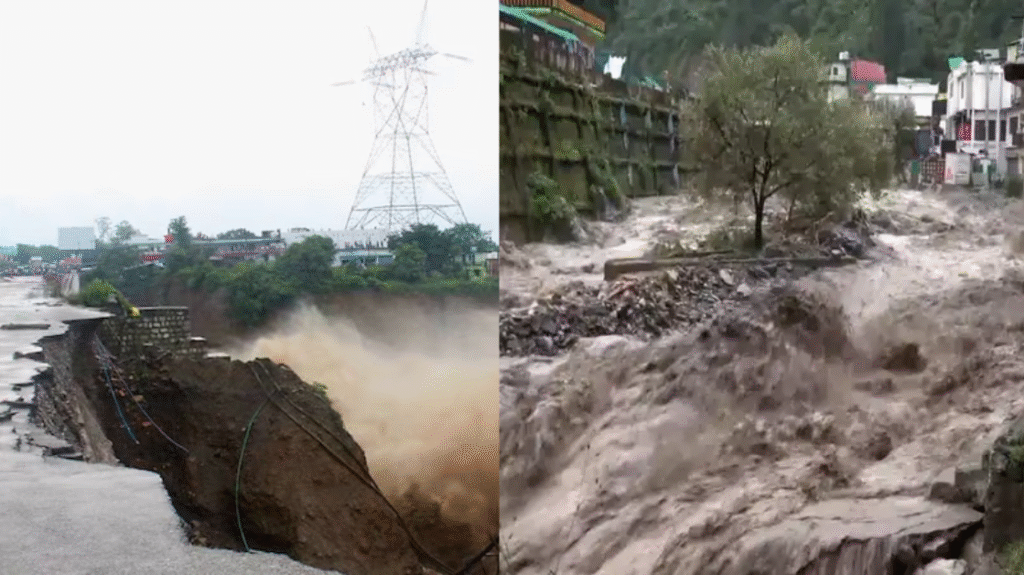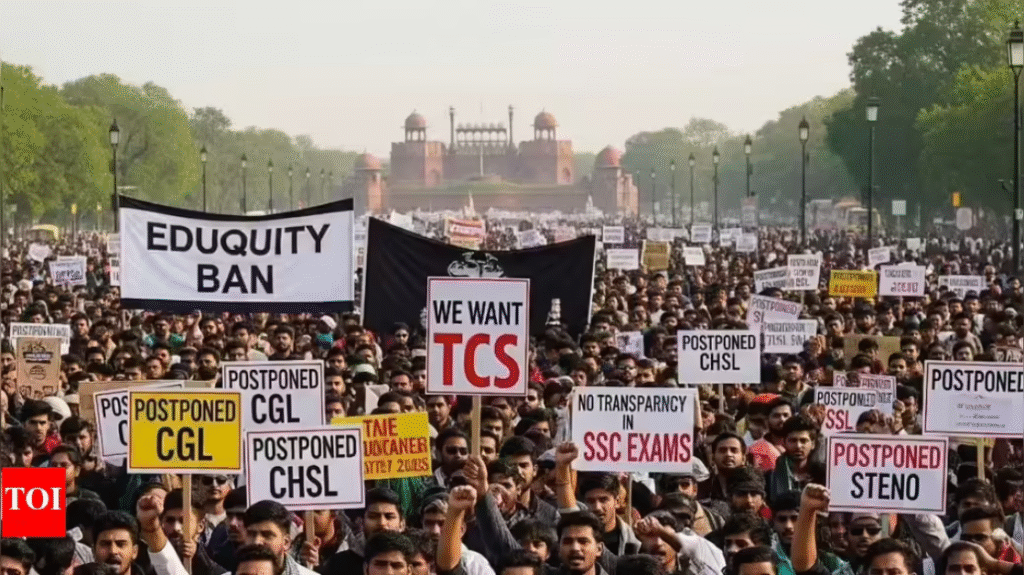Heavy rains lashed Uttarakhand on September 16, 2025, causing devastation across Dehradun and adjoining areas. The Tamsa River swelled and overflowed, flooding the Tapkeshwar Mahadev Temple and washing away shops, hotels, and vehicles. Several people were reported missing, while hundreds were displaced. The intensity of the rain resembled a cloudburst, a recurring natural calamity in the Himalayan region.
Beyond the tragedy lies a pressing question: what are the legal duties of authorities during such disasters, and who bears responsibility when lives and property are lost? This incident has once again brought the spotlight on India’s disaster management framework, urban planning, and legal accountability.
The Disaster: What Happened in Dehradun
- Continuous overnight rainfall caused the Tamsa River to rise dangerously, inundating the Tapkeshwar temple premises.
- Shops and hotels near the riverbanks collapsed; roads were blocked due to landslides and flooding.
- Rescue teams from SDRF and police rushed to evacuate stranded residents.
- Chief Minister Pushkar Singh Dhami personally reviewed the situation and directed quick rehabilitation measures.
- Visuals circulating online showed cars being swept away, bridges submerged, and entire families rushing to safer ground.
The tragedy reflects the vulnerability of Uttarakhand’s fragile ecosystem, but it also raises concerns over policy gaps and accountability.
Legal & Policy Framework Governing Disasters
India’s legal regime for natural calamities is primarily anchored in the Disaster Management Act, 2005, which mandates:
- Early warning systems and dissemination of alerts.
- Preparedness and mitigation plans by state and district disaster management authorities.
- Rescue, relief, and rehabilitation of affected people.
Additionally, environmental and construction laws govern where and how infrastructure should be built. Municipal bodies and development authorities must enforce building codes, zoning laws, and flood-control norms.
In the context of the Dehradun floods, questions arise:
- Were warnings issued in time?
- Did local planning authorities permit construction in flood-prone riverbanks?
- Were embankments, bridges, and drains maintained adequately?
If the answer to these is no, it opens the door to legal liability and negligence claims.
Liability and Negligence in Flood Cases
Government’s Duty of Care
Under Article 21 of the Constitution, the Right to Life extends to protection from preventable disasters. If the government fails to take reasonable steps—such as issuing timely warnings or maintaining drainage systems—it may be held accountable in courts.
Civil Claims
Victims who lost shops, hotels, or houses may file civil suits claiming damages under tort law. If negligence of a public authority or contractor is proven, compensation may be awarded.
Judicial Oversight
High Courts and the Supreme Court have, in past flood-related cases, directed governments to:
- Conduct safety audits of dams, embankments, and rivers.
- Enforce stricter urban planning regulations.
- Provide ex gratia relief to victims without delay.
In Dehradun’s case, if families or shopkeepers approach the judiciary, the state may be ordered to compensate losses and strengthen disaster preparedness.
Why Uttarakhand Faces Repeated Cloudburst Disasters
- Geographical Vulnerability – Being part of the fragile Himalayan ecosystem, Uttarakhand is prone to landslides, flash floods, and cloudbursts.
- Unplanned Urbanization – Rapid construction along riverbeds, hill slopes, and ecologically sensitive areas has increased vulnerability.
- Deforestation and Encroachments – Loss of forest cover reduces natural absorption of rainwater, causing sudden runoffs.
- Climate Change – Scientists note that extreme rainfall events are increasing in frequency due to global warming.
Thus, while cloudbursts are natural, the scale of damage is often human-made.
Rescue and Relief Measures
- Schools were shut as precautionary measures.
- The SDRF, local police, and NDRF were deployed for rescue operations.
- Temporary shelters were set up for displaced families.
- The Chief Minister announced immediate relief and compensation to the affected families.
However, critics argue that the response was reactive, not proactive. Many residents claimed they had no prior warning before the river overflowed.
Criticism of Disaster Management
- Ineffective Early Warning – Despite IMD’s red alert, locals said they received no specific evacuation notice.
- Encroachment on Riverbanks – Shops and hotels near Tapkeshwar temple were built in flood-prone areas with questionable permits.
- Infrastructure Failures – Roads, drains, and embankments crumbled, showing lack of maintenance.
- Slow Relief Compensation – In past disasters, victims had to wait months for government compensation, raising concerns about bureaucratic delays.
These failures highlight policy implementation gaps more than lack of law.
Legal Precedents & Court Interventions
Courts in India have consistently recognized state responsibility in disaster cases:
- 2013 Uttarakhand Floods – The Supreme Court criticized unregulated construction and ordered stricter environmental safeguards.
- Chennai Floods 2015 – The Madras High Court held civic bodies accountable for poor drainage and encroachments.
- Kerala Floods 2018 – PILs led to directions for better dam management and flood-control planning.
Dehradun’s floods may similarly lead to judicial scrutiny of construction near rivers and adequacy of state disaster plans.
Broader Implications
- For Policy Makers: Need for stricter land-use planning in hill towns, better forecasting, and stronger disaster governance.
- For Citizens: Increased awareness of rights—residents can demand safe infrastructure and seek compensation when negligence is evident.
- For Courts: Balancing natural calamity with man-made negligence to assign responsibility.
Conclusion
The Dehradun cloudburst and floods of September 2025 are another reminder that natural disasters in Uttarakhand often become human tragedies due to policy lapses. While no authority can stop heavy rainfall or cloudbursts, timely warnings, proper urban planning, and resilient infrastructure could save countless lives and livelihoods.
Legally, the responsibility lies with state authorities under the Disaster Management Act and constitutional duties. If gaps are proven, victims have the right to approach courts for accountability. Going forward, the incident should not just be remembered as another monsoon disaster but as a call for legal and policy reforms in disaster governance.
To read more Indian Laws and news, visit Legal Guide India



